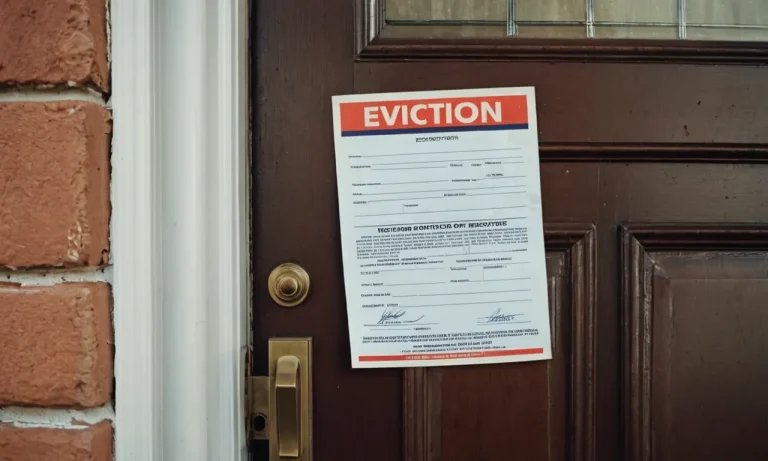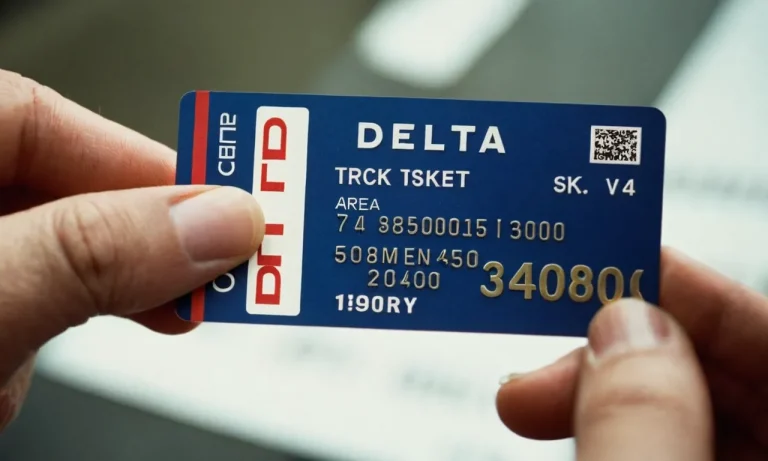Renting a car can be convenient for getting around, but what happens if that rental car gets damaged? As a renter, you want to know how much it could cost if you damage the rental vehicle.
In this comprehensive guide, we’ll cover everything you need to know about rental car damage and what it could cost you.
If you’re short on time, here’s a quick answer: the cost to repair rental car damage can range from a few hundred dollars for a minor scratch to over $3,000 for major damage.
Rental companies will charge your card for the repairs plus loss of use fees.
Rental Car Damage Policies
When renting a car, it’s important to familiarize yourself with the rental car damage policies. These policies outline who is responsible for any damage that may occur to the vehicle during the rental period.
Understanding these policies can help protect you from unexpected costs and ensure a smooth rental experience.
Liability Coverage
Liability coverage is a type of insurance that protects you in case you cause damage to another person’s property or injure someone while driving the rental car.
Most rental car companies include liability coverage in their rental fees, but the coverage limits can vary.
It’s important to review the liability coverage offered by the rental car company and consider purchasing additional coverage if necessary.
Remember that liability coverage typically does not cover damage to the rental car itself.
Loss Damage Waivers
A loss damage waiver (LDW) is an optional coverage offered by rental car companies that relieves you of financial responsibility if the rental car is damaged or stolen.
By purchasing an LDW, you can avoid paying for repairs or the full value of the car in case of an accident.
However, it’s important to note that LDWs usually come with certain exclusions and restrictions. It’s recommended to carefully review the terms and conditions of the LDW before making a decision.
Your Own Insurance Coverage
In some cases, your own personal auto insurance policy may cover rental car damage. Before renting a car, it’s wise to contact your insurance provider and inquire about the extent of your coverage.
If your policy does provide coverage for rental cars, you may be able to decline the rental car company’s LDW and save on additional costs.
However, it’s important to review the details of your insurance coverage and consider any deductibles or limitations that may apply.
It’s worth mentioning that credit card companies may also offer rental car damage coverage as a benefit of using their card to pay for the rental.
However, the coverage provided by credit cards can vary, so it’s important to check with your credit card issuer to understand the extent of their coverage.
Ultimately, understanding the rental car damage policies and having the appropriate coverage can give you peace of mind when renting a car.
Remember to review the liability coverage, consider purchasing an LDW if necessary, and check with your insurance provider or credit card issuer to see if you are already covered.
By being informed and prepared, you can avoid any unexpected costs and enjoy your rental car experience.
Common Rental Car Damage Costs
When renting a car, it’s important to be aware of the potential damage costs that you may be responsible for.
While rental car companies have insurance options to cover damages, there are certain types of damage that may not be covered, leaving you liable for the cost.
Here are some common types of rental car damage costs to keep in mind:
Minor Cosmetic Damage
Minor cosmetic damage includes small scratches, dents, or paint chips on the exterior of the car. While these damages may not affect the overall functionality of the vehicle, rental car companies may charge you for their repair.
It’s important to thoroughly inspect the car before and after your rental period to avoid being held responsible for pre-existing damage.
Major Body Damage
In the unfortunate event of a major accident or collision, you may be liable for the repair costs of significant body damage to the rental car.
This can include extensive dents, broken windows, or damage to the structure of the vehicle.
The repair costs for major body damage can be quite expensive, so it’s crucial to drive responsibly and adhere to traffic rules to minimize the risk of such incidents.
Lost Keys or Key Replacement
If you misplace the keys to your rental car or accidentally damage them, you may be responsible for the cost of replacing or reprogramming the keys.
This can be an unexpected expense, so it’s important to keep track of the keys and take necessary precautions to avoid losing them.
Tire and Wheel Damage
Damage to the tires and wheels of a rental car is another common cost that renters may encounter. This can include punctured or flat tires, bent or cracked wheels, or damage caused by hitting curbs or potholes.
Rental car companies may charge you for the repair or replacement of the tires and wheels, so it’s important to drive carefully and avoid rough roads whenever possible.
Windshield Chips and Cracks
Chips and cracks in the windshield are common issues that can occur during a rental period. If the damage is minor, it may be repairable.
However, in some cases, the entire windshield may need to be replaced, which can be costly.
It’s important to report any windshield damage to the rental car company as soon as possible to avoid being held responsible for the full cost.
Remember, it’s always a good idea to thoroughly read and understand the terms and conditions of your rental agreement to be aware of any potential damage costs.
Taking photos or videos of the car before and after your rental period can also serve as evidence in case of any disputes regarding pre-existing damage.

Additional Rental Company Fees
When renting a car, it’s important to understand that there may be additional fees beyond the base rental cost.
These fees can vary from one rental company to another, so it’s essential to read the fine print and ask questions before making your reservation.
In this section, we will discuss three common additional fees that rental car companies may charge: administrative fees, loss of use fees, and diminished value fees.
Administrative Fees
Administrative fees are charges imposed by rental car companies to cover their administrative costs. These fees can include the paperwork and processing involved in renting a vehicle.
It’s important to note that administrative fees are typically non-negotiable and can range from a few dollars to over $50, depending on the rental company and the location.
Loss of Use Fees
Loss of use fees are charges that rental car companies may impose when a rented vehicle is damaged and is undergoing repairs.
These fees are intended to compensate the rental company for the revenue lost while the vehicle is out of service.
Loss of use fees can vary widely depending on the rental company’s policy and the duration of the repair. Some rental companies may charge a daily fee, while others may charge a flat fee for the entire repair period.
How to Avoid Excess Damage Costs
Purchase Rental Insurance
One effective way to avoid excessive damage costs when renting a car is to purchase rental insurance. Many rental car companies offer insurance options that can provide coverage for damages to the vehicle during your rental period.
It is important to carefully review the insurance options available and choose a policy that best suits your needs.
By purchasing rental insurance, you can have peace of mind knowing that you are financially protected in the event of any damage to the car.
Document Pre-Existing Damage Thoroughly
Before driving off with a rental car, it is crucial to thoroughly document any pre-existing damage to the vehicle. Take the time to carefully inspect the car and note down any scratches, dents, or other damages.
It is recommended to take photos or videos of the car’s condition from multiple angles as evidence.
By documenting the pre-existing damage, you can avoid being held responsible for any damages that were already present before your rental period.
Drive Carefully and Follow Rules
One of the best ways to avoid excess damage costs is to drive carefully and follow all traffic rules and regulations.
Avoid reckless driving behaviors such as speeding, aggressive braking, or sudden lane changes. Be mindful of your surroundings and drive defensively.
By being a responsible driver, you can minimize the risk of accidents and potential damage to the rental car.
Consider Excess Insurance Products
In addition to rental insurance offered by the car rental company, you may also consider purchasing excess insurance products.
These products provide additional coverage and can help reduce your liability in the event of damage to the rental car.
It is essential to carefully review the terms and conditions of any excess insurance products to ensure they provide adequate coverage for your needs.
By following these tips, you can significantly decrease the likelihood of incurring excess damage costs when renting a car.
Remember to always be cautious, document pre-existing damage, and consider purchasing insurance options to protect yourself financially.
The Claims Process for Rental Damage
Notify the Rental Company
When you experience damage to a rental car, it is crucial to notify the rental company as soon as possible. This will ensure that they are aware of the situation and can begin the claims process promptly.
Most rental companies have specific procedures in place for reporting damage, so be sure to follow their instructions carefully.
By notifying the rental company promptly, you can avoid any potential disputes or complications later on.
Provide Documentation
To support your claim for rental car damage, it is essential to provide the rental company with thorough documentation. This may include photographs of the damage, a police report if applicable, and any other relevant evidence.
It’s also a good idea to keep copies of all paperwork related to the rental, including the rental agreement and insurance documents.
By providing comprehensive documentation, you can strengthen your case and increase the likelihood of a successful claim.
Dispute Unreasonable Charges
In some cases, the rental company may try to charge you for damage that you believe is unfair or unjustified.
If this happens, it is important to dispute these charges. Start by gathering any evidence or documentation that supports your position.
Then, calmly and professionally discuss your concerns with the rental company’s customer service department.
If the issue cannot be resolved directly with the rental company, you may need to escalate the dispute to a higher authority, such as the company’s management or a consumer protection agency.
Pay the Damages
If the rental company determines that you are responsible for the damage, it is important to pay for the damages promptly. Delaying payment can result in additional fees or penalties.
If you have insurance coverage for rental cars, reach out to your insurance provider to understand how the damages will be handled.
It’s also a good idea to review your credit card’s rental car insurance policy, as some credit cards offer coverage for rental car damage. By paying for the damages promptly, you can resolve the issue efficiently and minimize any potential financial impact.
Conclusion
Damage to a rental car can lead to high out-of-pocket costs if you don’t have adequate coverage. While minor dents or scratches may just cost a few hundred dollars, major damage like a smashed bumper can run over $3,000 when factoring in loss of use and diminished value.
Carefully review rental agreements and consider added insurance products to protect yourself from excessive fees.
With knowledge of damage policies and a careful driving approach, you can have peace of mind that a fender bender won’t lead to financial fender bender.






